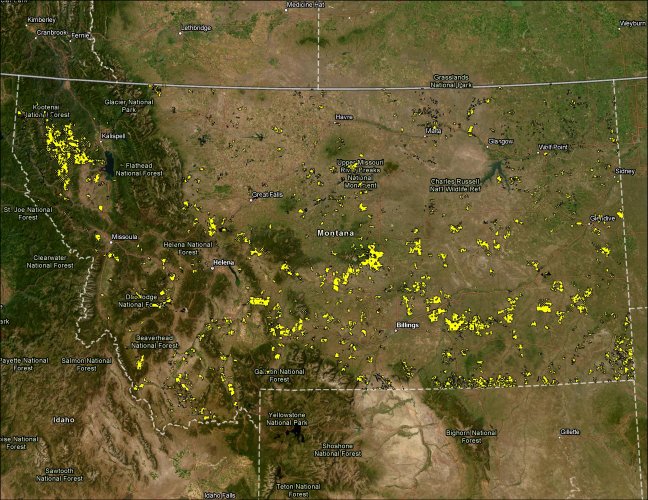El Jason
Well-known member
Sure it will. They just learn to move back and forth in the dark.Even if there is outside pressure, bad habitat on private land won't keep them there.
Follow along with the video below to see how to install our site as a web app on your home screen.
Note: This feature may not be available in some browsers.
Sure it will. They just learn to move back and forth in the dark.Even if there is outside pressure, bad habitat on private land won't keep them there.
I dont know much about PERC, what is their angle in all of this? What was their reason for supporting transferable tags?MOGA testifying in support of a bill that only harms their members financially and PERC walking back from their preference for transferable tags is significant progress in my mind.
Show me the $$$$$$I dont know much about PERC, what is their angle in all of this? What was their reason for supporting transferable tags?
I looked at their website and it says "Our current initiatives focus on market approaches to wildlife conservation and improving public lands management". What exactly do they mean by market approaches?
This cracked me up. I've said this before on this very site and was told I was wrong. mtmuley, but with current season structures there is no way in hell elk habits are going to drastically change to where they begin utilizing public land much differently than they currently do.
Who told you that?This cracked me up. I've said this before on this very site and was told I was wrong. mtmuley
More than one person. Was a couple years ago on a landowner bitchfest thread. Weather? Thought we were talking hunting pressure. mtmuleyWho told you that?
I believe it was Ken Hamlin who had data from about 30 years ago which showed elk movements/migrations in some areas were highly influenced by seasonality and not weather.
We are talking about hunting pressure. Hamlins study showed elk packed up and migrated before hunting season to a safe haven, even though there was no weather that would trigger a long migration.More than one person. Was a couple years ago on a landowner bitchfest thread. Weather? Thought we were talking hunting pressure. mtmuley
We are talking different scenarios I guess. The elk I am talking about rarely leave the private land they are on. Even when hunted. mtmuleyWe are talking about hunting pressure. Hamlins study showed elk packed up and migrated before hunting season to a safe haven, even though there was no weather that would trigger a long migration.
It was 213, but no worries. Why do you think it is low? 2500 acres is 3.9sq miles. Seems like a significant chunk of land.I find it hard to believe that only 219 ranches would qualify for this
@JLS MT-BHA did a GIS study, this is from their FB page:It was 213, but no worries. Why do you think it is low? 2500 acres is 3.9sq miles. Seems like a significant chunk of land.
Assume 213 qualify. How many participate? half? I think using 250 is a decent estimate (some get 0, some get 2,3,4). 17,700 minus 250 is 17,450. 250 spend 10 days in field, that is 2,500 hunter days. Again, not even a rounding error when people say "17k NR tags".
Per @Ben Lamb 's post
"..this could potentially see between 25500 and 35700 fewer hunter days on public land and publicly accessible lands..."
There is a significant difference between these two numbers. I have no idea who is right, or closer to being right, but the numbers sort of matter when they are core to the argument. When I saw Ben's post I thought the numbers seem high, but the assumptions might make sense. Just trying to square the circle.
But once we remove duplicate owners and the properties in permitted areas
So for talking points it was better to artificially represent a lower number than the actual number. Got it.Good question that was also raised on their site, and this is how it was answered:
"We included the total numbers (also low), then we removed permitted areas because there's no guarantee these will be drawn, and we can't honestly point to those as folks who will be moved from public to private."
If that's how you want to see it, sure. I know you are pretty dug in at this point.So for talking points it was better to artificially represent a lower number than the actual number. Got it.
Do you know how the number Ben cited was determined? Even the low end seemed aggressive to me, but it may have a reasonable justification. And even using 550 number it is hard to imagine they hunt 45days every year. I guess my point would be we all toture the numbers to say what we want them to.So for talking points it was better to artificially represent a lower number than the actual number. Got it.
Why didn’t BHA reference the most recent and actual number from 2022, it’s easy to obtain. In total it was most recently 95% or 73/77, so not a guarantee overall but damn close.Good question that was also raised on their site, and this is how it was answered:
"We included the total numbers (also low), then we removed permitted areas because there's no guarantee these will be drawn, and we can't honestly point to those as folks who will be moved from public to private."
